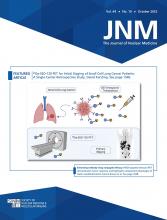Article Figures & Data
Tables
- TABLE 1.
Ethical Dimensions of AIMDs According to Primary Responsible Party: Clinicians During Deployment, Governance by Administrators and Professional Societies, and Governance by State and Federal Regulators
Ethical dimension Clinicians during deployment Governance by administrators and societies Governance by regulators Welfare Ensure familiarity with performance and limitations of AIMDs before use Ensure clinicians are trained in AIMD performance and limitations Ensure that clinical utility, not just in silico performance, is evaluated and declared Avoid off-label or unevaluated use of AIMD Avoid automation bias through technical and policy interventions Ensure that legal liability for harm is clearly demarcated Autonomy Ensure consent to direct data collection and that risks, benefits, and limitations of AIMD are declared to patient Ensure clear protocols for declaring risks and benefits of AIMD to patients Ensure that performance and limitations are declared in ways that enable patient and clinician decision-making Consider notification for secondary reuse of data in learning AIMDs Promote legitimacy by involving patients in policy priority setting for AIMD use Promote techniques that explain salience of input features at population level Justice Carefully justify use of sensitive attributes (race, sex, etc.) as input features Ensure regular auditing of performance disparities by race, sex, etc. Require evaluation of performance disparities by race, sex, etc. Avoid conflicts of interest as clinician/researcher Ensure clear mechanisms for managing clinician/researcher conflicts of interest Promote broad access to AIMDs through subsidy and regulation Use of term ensure or required denotes legally or ethically required conduct; use of term promote or avoid denotes ethically ideal conduct.
- TABLE 2.
U.S. Food and Drug Administration Grading System for Risk Evaluation of Software as Medical Device (15)
Significance of AIMD Patient condition Non-CADe (e.g., measure, denoise, annotate; no interpretation) CADe (e.g., identify abnormalities; dosimetry calculation) CADx (e.g., guide diagnosis or treatment) Not serious I I II Serious I II III Critical II III IV I–IV represent lowest risk through highest risk.







